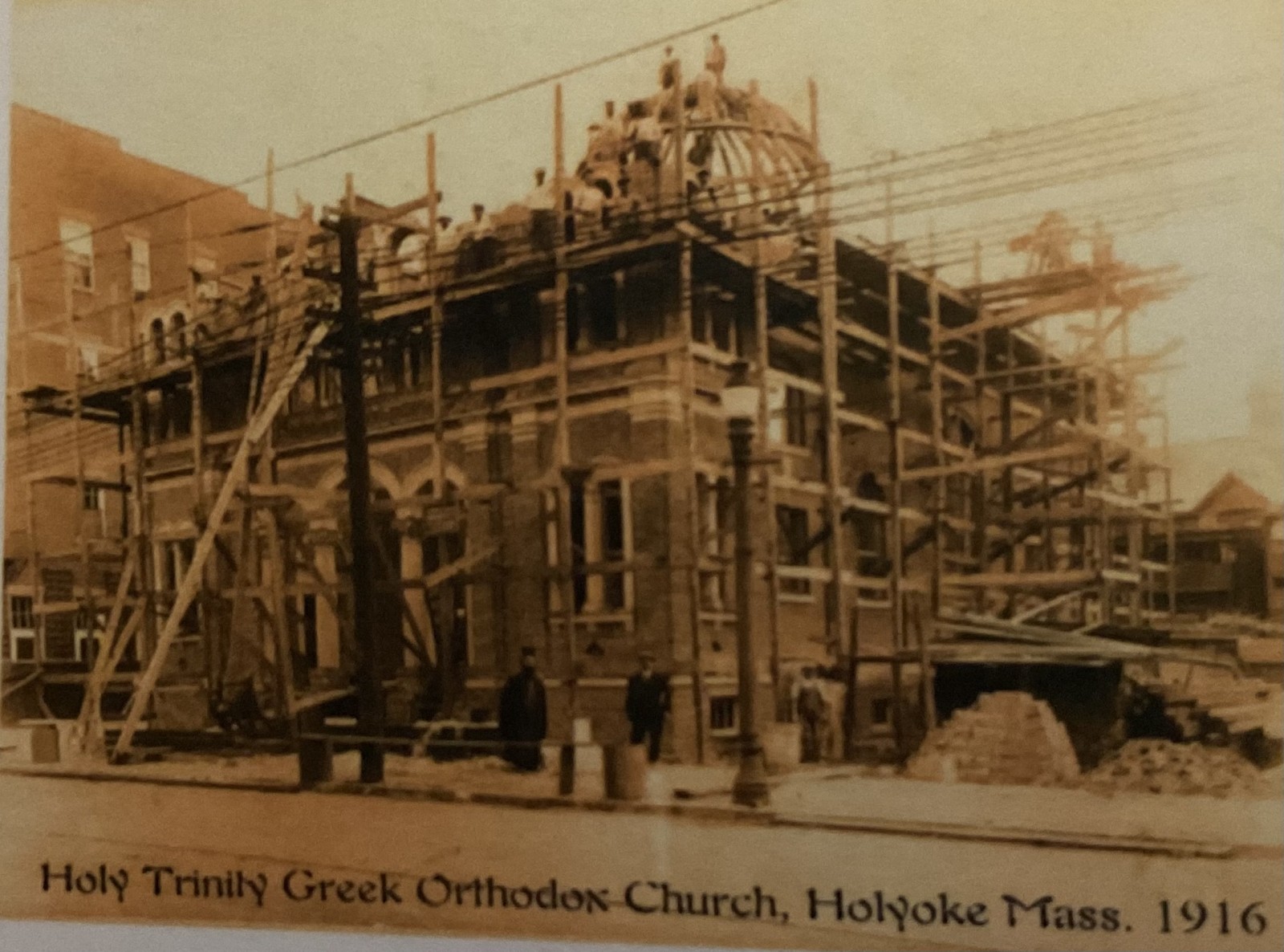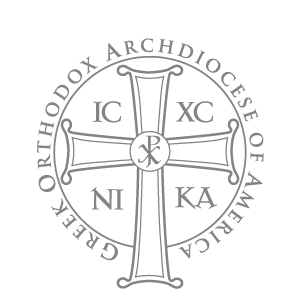Highlights in the History of the
Church of the Holy Trinity
Protopresbyter Harry Savas Vulopas, Th.D.
The Greek Orthodox Community of Holyoke, Massachusetts traces its beginnings back to about the year 1900. By 1905, there were approximately 25 individuals of Greek extraction living and working in the "Paper City." The paper and textile mills which dominated the industrial base of the area required willing hands and strong backs to produce their goods, and the young lads from Hellas were able to fulfill both requirements. A steady influx of immigrants continued to swell the ranks of the Hellenic population, so that by 1910 there were several hundred persons whose native language was Greek residing in Holyoke.
In those early years, the spiritual needs of our people were usually served by the priests of the Greek Orthodox community of Springfield, Massachusetts. The faithful were compelled to travel the ten mile distance to Springfield by trolley and then, following the Divine Liturgy, to make the tiring trip back again to their homes in Holyoke. As their numbers grew, however, they began to consider the possibility of holding church services closer to home. The Divine Liturgy of St. John Chrysostom was celebrated for the first time in Holyoke in the year 1911. It would not be until 1914, however, that services would be held with some regularity at the Monument National Canadian-Francais Hall, which stood at the corner of Race and Appleton Streets. The names of three priests appear in the rather scant records that exist from that time. They are the Very Rev. Archimandrite Bartholomaios Karahalios, the Rev. Presbyter Papalcloudas, and the Rev. Presbyter Hariton Panagopoulos.
Before 1918, there was no formal Greek Orthodox ecclesiastical authority in the United States. In order to obtain the services of a canonically ordained priest, a community had to apply either to the Ecumenical Patriarchate or to the Church of Greece, and, less frequently to the Patriarchate of Alexandria. When contacted, these Jurisdictions would inform the available clergymen under their authority about the prospective position and the latter would then contact the representatives of the community to make the final arrangements. Later, the Greek language newspapers of the day, such as the Ethnikos Kyrix and the Atlantis, regularly listed the names and addresses of priests who were available to serve the rapidly multiplying Greek Orthodox communities in the United States. According to the information which is recorded in the archives of the Secretary of the Commonwealth of Massachusetts, the Commissioner of Corporations, William D. T. Trefry, granted permission on March 1, 1916 to a group of individuals from Holyoke to form a corporation "for the purpose of the erection of a Greek Orthodox church and conducting religious services in accordance with the rules of said church … '' The first meeting "for organization" was held on Sunday, March 18, 1916 at 206 High Street in Holyoke. The incorporators of the "Greek Orthodox Community, Holy Trinity, Inc." were James Nicolaidis, President; Nicholas Christodulow, Treasurer; Alex Karahal, Clerk; and directors: Theodoros Kyreakos, Louis Mehos, Andrio Nickolow, Nick Klokiniotis, Nick Vlanitis, Michael Lyanopoulos, Charles Manos, and Arthur Lafayanis. On May 19, 1916, Albert P. Langtry, the Secretary of the Commonwealth, issued the official charter to Holy Trinity parish. Shortly after this significant series of events, the members of the nascent parish moved with surprising swiftness and decisiveness to initiate the process of designing and constructing their house of worship. The well known Greek architect, Kyriakos Kalfas of New York City, was commissioned to execute the design of the edifice. Among his earlier works is the beautiful Evangelismos Cathedral of Boston, which was erected in 1906. Mr. Kalfas set out to create a structure which would conform to the basic principals of Byzantine architecture. He modeled the fundamental design of the edifice after that of the Church of the Pantocrator in Patras, Greece, departing only in some minor respects from the original. He made a few concessions to the vagaries of New England weather; thus in place of a dome constructed of wooden struts, tiles and mortar, he designed one of welded steel plates, which to this day attests to Kalfas' talent and good judgment. In its essentials, Holy Trinity is a church in the Byzantine style of the eleventh and twelfth centuries A.D. Theauthentic Orthodox character of this building is equaled by very few churches in this country.

